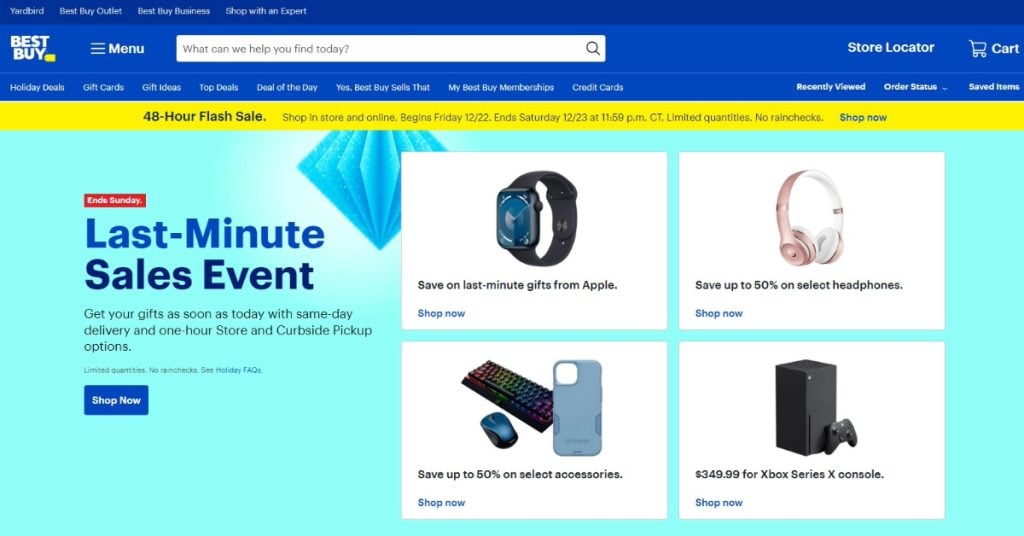
Best Buy marketplace case study: book a demo to start yours
Best Buy is a global chain of stores specializing in electronics and appliances, providing a diverse array of consumer tech and home products both in physical locations and online. If you’d like to start your own marketplace like Best Buy, you’re facing a buy vs build decision. So before you decide to build it in-house on top of Spree open-source, consider using the feature-rich Enterprise Edition cutting your time-to-market to a few weeks.
Build vs Buy a marketplace?
Opting for open-source brings various benefits, including complete control and the liberty to customize. However, these advantages often come with substantial financial implications. Creating a complete marketplace solution is a long, expensive process, typically requiring many months or even years. This understanding is based on our experiences with different marketplace projects.
If speed and reliability are your priorities, choosing a pre-built, enterprise-ready solution like Spree Commerce Enterprise Edition is the practical path backed by the experience of those who know how unpredictable and risky custom marketplace development can be.
Back to the Best Buy marketplace case study
Best Buy, a prominent electronics retailer founded in 1966, operates a vast marketplace encompassing both physical stores and a robust online platform across the United States, Canada, and Mexico.
Renowned for its extensive selection, Best Buy offers a wide range of electronic devices, appliances, entertainment products, and tech services. Notably, in the previous fiscal year, the company reported approximately $47 billion in revenue, showcasing its significant market presence.
The success of Best Buy’s marketplace stems from its multifaceted strategy. Utilizing an omnichannel approach, the integration of physical stores with an efficient online presence has been pivotal. This fusion enables customers to access products seamlessly across platforms while benefiting from services like in-store pickups, enhancing convenience.
Moreover, Best Buy’s marketplace strategy involves collaborating with diverse brands and vendors, expanding its product offerings beyond what it directly stocks. This approach enriches customer choices and strengthens Best Buy’s position as a premier destination for electronics. Strategic partnerships and alliances further bolster its market standing, providing customers with exclusive deals and unique product offerings.
Additionally, the company has committed efforts to sustainability by setting environmental goals. By promoting eco-friendly products and reducing its carbon footprint, Best Buy aligns with evolving consumer values, shaping its brand image positively in an era emphasizing environmental consciousness.
How to emulate Best Buy marketplace success?
To somewhat mirror Best Buy’s achievements, it’s a good idea to launch your marketplace quickly, within weeks rather than months. Assess how well your products suit your audience’s demands and adjust your strategies for attracting customers based on actual feedback. Experiment with the market before fully committing to its development.
Here’s how to get started:
- Book a marketplace demo call: We’ll help you evaluate Spree for your marketplace needs and get started with the Enterprise Edition
- Customize your Storefront: Use the drag & drop page builder or custom CSS
- Onboard Brands: Invite your brands or choose brands from our catalog
- Select Products: Curate products and collections manually or automate it
- Embed products: Make your content, newsletters, social media shoppable
- Get Paid: Get paid as soon as products are shipped by the brands
- End-to-end automation: brands sync, fulfillment, payouts, invoicing, taxes
When you’ve tried all that and it works, start thinking about building your own, custom-made marketplace project based on Spree Commerce. First, by decoupling the storefront and going headless with marketplace API, and later with your own backend, if you decide you really need it. Just lift and shift the storefront.
Nobody has to know what’s under the hood, right?



